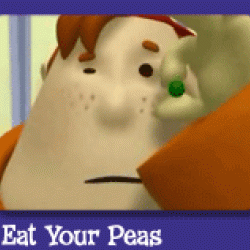Source Institutions
Source Institutions
Add to list Go to activity
Activity link broken? See if it's at the internet archive

In this activity, learners use two different techniques to estimate how many little things fit into one bigger thing. Learners estimate the number of peas that will fit into something the size of a small paper cup. Learners estimate volume in part A and estimate weight in part B. Learners can calculate the number of peas that could fit in a space the size of a human brain by following the procedures outlined in part C. This lesson can be combined with viewing the "Eat your Peas" video on the Quarked website.
- Under 5 minutes
- 45 to 60 minutes
- $1 - $5 per group of students
- Ages 8 - 14
- Activity, Lesson/Lesson Plan
- English
Quick Guide
Materials List (per group of students)
- Bag of dried peas (or dried mini-marshmallows, chickpeas, dried beans)
- Small paper cup containers (e.g. Dixie cups)
- Calculators
- Pencils and paper
- Rulers
- Food scale(s)
- Pea Brain! Student Worksheet
Subjects
-
Life Sciences
-
Human Body
- The Brain and Nervous System
-
Human Body
-
Mathematics
- Algebra
-
Data Analysis and Probability
- Data Analysis
- Data Collection
- Probability
-
Measurement
- Units of Measurement
- Size and Scale
-
Physical Sciences
-
Structure and Properties of Matter
- Mass and Weight
- Volume and Density
-
Structure and Properties of Matter
-
The Nature of Science
-
The Scientific Process
- Conducting Investigations
- Gathering Data
- Formulating Explanations
- Communicating Results
-
The Scientific Process
Informal Categories
- Food and Cooking
Audience
To use this activity, learners need to:
- see
- read
- touch
Learning styles supported:
- Involves hands-on or lab activities
Other
Components that are part of this resource:
Includes alignment to state and/or national standards:
This resource is part of:
Access Rights:
- Free access
By:
Rights:
- All rights reserved, University of Kansas, 2006
Funding Sources:
- University of Kansas
- National Science Foundation, EPS-0236913
- State of Kansas through the Kansas Technology Enterprise Corporation
- National Science Foundation, EPP-0354836
- National Science Foundation, EPS-90903806
- Ewing Marion Kauffman Foundation
